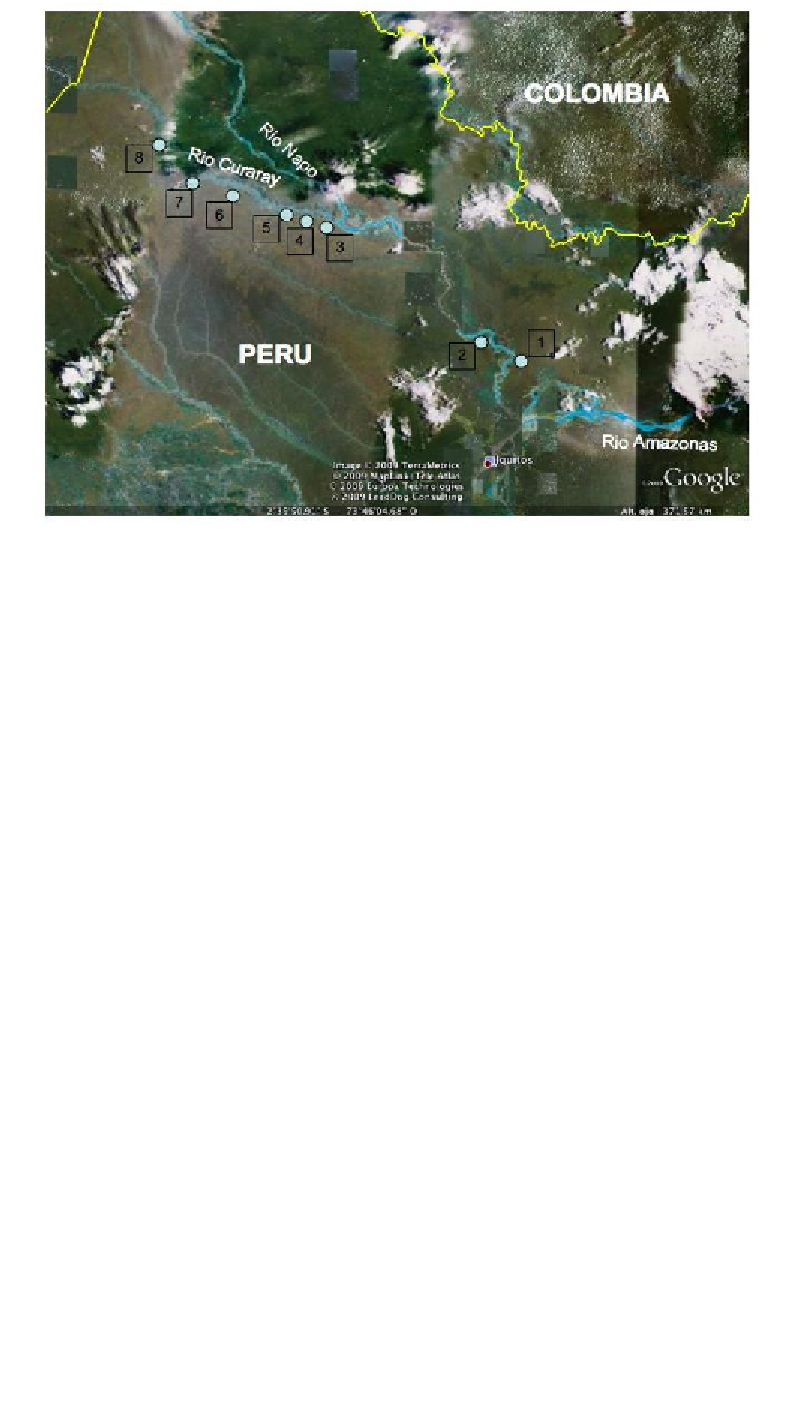Biology Reference
In-Depth Information
Figure 1. The eight pink river dolphin sampling points in the Napo (1-2) (affluent of the Amazon River)
and Curaray rivers (3-8) (affluent of the Napo River) within the Peruvian Amazon.
DNA extraction from the caudal fin biopsies was performed by the phenol-chloroform
method (Sambrock et al., 1989). The nine microsatellite markers studied in the
Inia
geoffrensis
samples were Ev14, Ev37, Ev76, Ev94 (Valsecchi & Amos, 1996), MK5 (Krutzen
et al., 2001), PPHO137 (Rosel et al., 1999), KWM2a, KWM2b and KWM12a (Hoelzel et al.,
1998, 2002). These citations and Ruiz-García et al., (2007, 2010a) explain the amplification
conditions of these microsatellites.
The amplification products were kept at 4 °C until they were used. The PCR
amplification products were run in denatured 6 % polyacrilamide gels in a Hoefer SQ3
sequencer vertical chamber with 35 W as a constant and the gels were stained with AgNO
3
(silver nitrate) after 2-3 hours of migration. We used the molecular weight markers X174
DNA digested with
Hind
III and
Hinf
I. A molecular weight marker was loaded every eight
lanes.
Population Genetics Analyses
The mean number of alleles and the observed and expected heterozygosities (H
o
and H,
respectively), and their respective standard errors, were estimated for each one of the point
samples and for the eight locality samples taken as a whole representing the 280 km of the
Napo-Curaray rivers sampled.
To determine possible deviations from the Hardy-Weinberg equilibrium (HWE), in each
lagoon as well as globally, we used an exact test using Markov chains, with forecasted chain
length of 1,000,000 and 100,000 demorization steps. The average value of the F
is
statistic

Search WWH ::

Custom Search